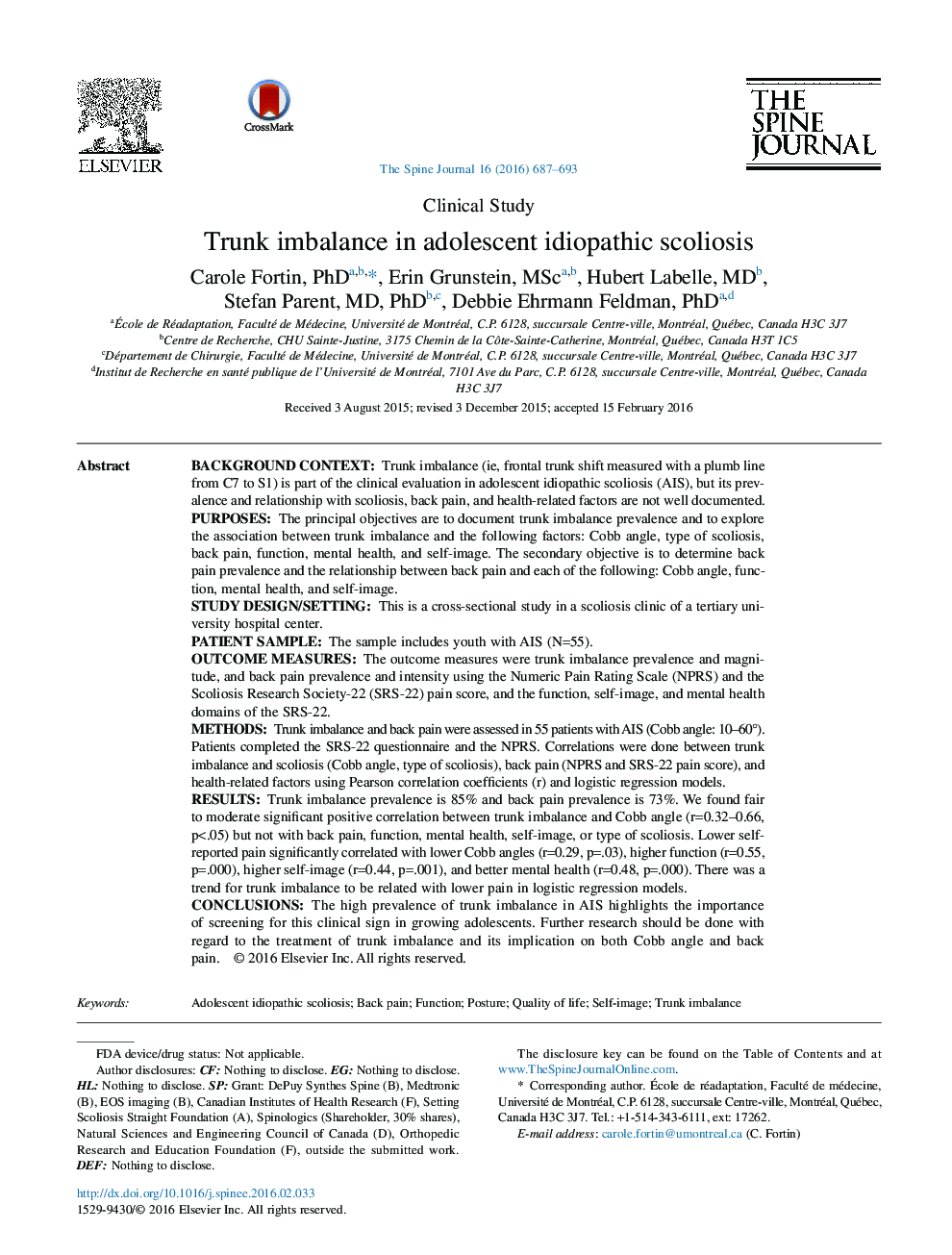| کد مقاله | کد نشریه | سال انتشار | مقاله انگلیسی | نسخه تمام متن |
|---|---|---|---|---|
| 4095954 | 1268549 | 2016 | 7 صفحه PDF | دانلود رایگان |
Background ContextTrunk imbalance (ie, frontal trunk shift measured with a plumb line from C7 to S1) is part of the clinical evaluation in adolescent idiopathic scoliosis (AIS), but its prevalence and relationship with scoliosis, back pain, and health-related factors are not well documented.PurposesThe principal objectives are to document trunk imbalance prevalence and to explore the association between trunk imbalance and the following factors: Cobb angle, type of scoliosis, back pain, function, mental health, and self-image. The secondary objective is to determine back pain prevalence and the relationship between back pain and each of the following: Cobb angle, function, mental health, and self-image.Study Design/SettingThis is a cross-sectional study in a scoliosis clinic of a tertiary university hospital center.Patient SampleThe sample includes youth with AIS (N=55).Outcome MeasuresThe outcome measures were trunk imbalance prevalence and magnitude, and back pain prevalence and intensity using the Numeric Pain Rating Scale (NPRS) and the Scoliosis Research Society-22 (SRS-22) pain score, and the function, self-image, and mental health domains of the SRS-22.MethodsTrunk imbalance and back pain were assessed in 55 patients with AIS (Cobb angle: 10–60°). Patients completed the SRS-22 questionnaire and the NPRS. Correlations were done between trunk imbalance and scoliosis (Cobb angle, type of scoliosis), back pain (NPRS and SRS-22 pain score), and health-related factors using Pearson correlation coefficients (r) and logistic regression models.ResultsTrunk imbalance prevalence is 85% and back pain prevalence is 73%. We found fair to moderate significant positive correlation between trunk imbalance and Cobb angle (r=0.32–0.66, p<.05) but not with back pain, function, mental health, self-image, or type of scoliosis. Lower self-reported pain significantly correlated with lower Cobb angles (r=0.29, p=.03), higher function (r=0.55, p=.000), higher self-image (r=0.44, p=.001), and better mental health (r=0.48, p=.000). There was a trend for trunk imbalance to be related with lower pain in logistic regression models.ConclusionsThe high prevalence of trunk imbalance in AIS highlights the importance of screening for this clinical sign in growing adolescents. Further research should be done with regard to the treatment of trunk imbalance and its implication on both Cobb angle and back pain.
Journal: The Spine Journal - Volume 16, Issue 6, June 2016, Pages 687–693
